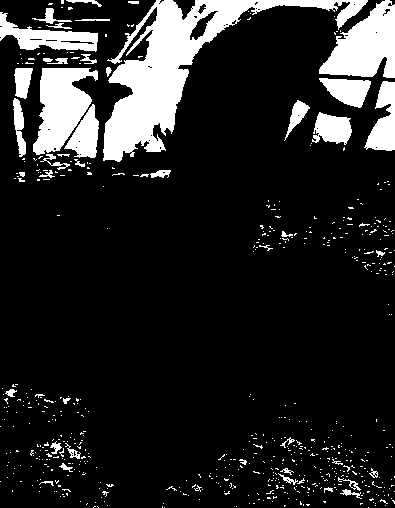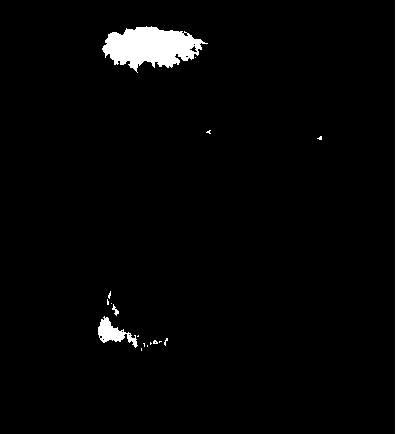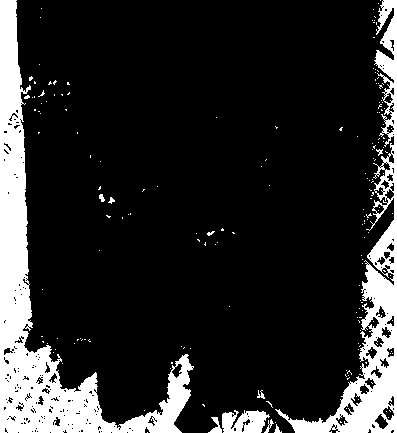Method of producing konjac sexual seeds by means of artificial pollination
A technology for artificial pollination and konjac is applied in the field of producing konjac sexual seeds by using artificial pollination technology, which can solve the problems of limiting the large-scale application of sexual reproduction of konjac, a solution to low germination rate, poor seed maturity and the like, and achieves the effect of wound disinfection. Good, improve the fruiting rate, prevent the effect of rain soaking
- Summary
- Abstract
- Description
- Claims
- Application Information
AI Technical Summary
Problems solved by technology
Method used
Image
Examples
Embodiment approach
[0027] Step 1: On a slope above 750m above sea level in Hanzhong City, Shaanxi Province, build a steel frame greenhouse with a height of 2.5 meters and a length and width as long as the ground. A retractable shading net is installed on it, which can provide a shading environment for the growth of sexual konjac seeds. The shade net is 1.5 meters above the ground on both sides of the shed, which is good for ventilation in the shed. In the 4-5 months of the konjac pollination period, add a layer of plastic film between the shade net and the greenhouse to keep out the rain, and put it away after the konjac pollination ends.
[0028] Step 2: At the end of March 2016, collect local flower konjac species with a seed age of 4 years or more and well-developed flower buds. Use 2,500 times of agricultural streptomycin and 500 times of thiophanate-methyl to disinfect the skin of the konjac species, and dry them in the sun. Plant after drying the surface, and ensure that the konjac flower ...
Embodiment 1
[0039] Select the farm flower konjac from Zhenba County, Hanzhong City, and the quality of the taro is about 500g. Plant according to the steps 1 and 2 described in the implementation mode, remove the stamens and spathes according to the steps 3 and 4, and perform artificial pollination according to the steps 5-8 and wound disinfection. Taking the single plant of natural pollination as the control, the investigation was carried out before the konjac seeds were harvested. According to the statistics: the stigma seed setting rate of artificial pollination konjac was 63.8%, while the natural pollination seed setting rate was 24.5%; the diseased plant rate of artificial pollination konjac was 8.0%, The diseased plant rate of natural pollination konjac was 19.7%; the average single weight of sexual seeds of artificial pollination was 0.16g, and the average single weight of sexual seeds of natural pollination was 0.14g; the germination rates of sexual seeds of artificial pollination ...
Embodiment 2
[0041]The difference between embodiment 2 and embodiment 1 is: only the konjac pollination single plant is removed spathe, stamens and appendages are not removed, and after artificial pollination, it is allowed to rot naturally and come off, compared with complete artificial pollination plants, investigation It was found that the seed setting rate was 58.7%, the diseased plant rate was 15.6%, and the average single weight of sexual seeds was 0.14g. The results showed that the technical scheme of pollination after removing spathes only had problems such as serious plant diseases, low seed setting rate, and light weight of seeds.
PUM
 Login to View More
Login to View More Abstract
Description
Claims
Application Information
 Login to View More
Login to View More - R&D
- Intellectual Property
- Life Sciences
- Materials
- Tech Scout
- Unparalleled Data Quality
- Higher Quality Content
- 60% Fewer Hallucinations
Browse by: Latest US Patents, China's latest patents, Technical Efficacy Thesaurus, Application Domain, Technology Topic, Popular Technical Reports.
© 2025 PatSnap. All rights reserved.Legal|Privacy policy|Modern Slavery Act Transparency Statement|Sitemap|About US| Contact US: help@patsnap.com



